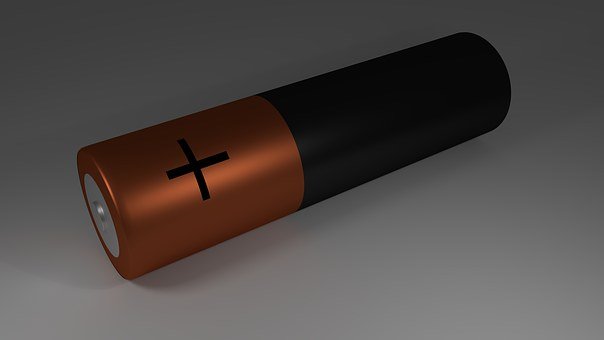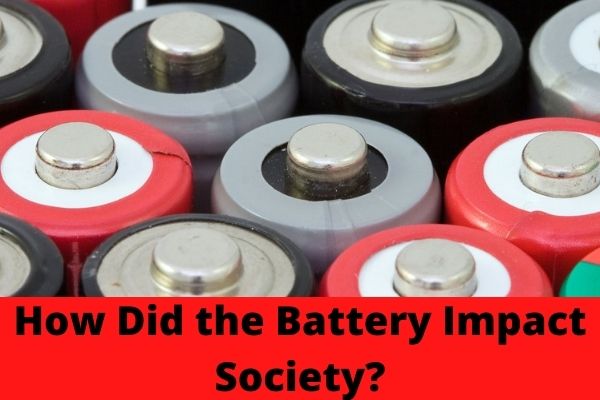Batteries invention was one of the most remarkable human-made inventions. It’s an inseparable part of modern life, but most people are unaware of the history of batteries.
For example, how many people know when was the first battery used and why?
Not many or maybe very few people can answer that. Right?
That’s why I will be revealing the original raw battery history here-
So, what was the first battery used for?
The First invented batteries were used to power the street lights and train carriages lights when stopped at any station. The first electrochemical cell battery was invented by Alessandro Volta, based on another Italian physicist Luigi Galvani experimental report updates.
Let’s learn and understand why was the first battery invented in detail below.
What Was The Purpose Of The Battery?

Initially, batteries were the first device developed and produced to use in electronic devices as a source of energy, after electricity invention. However, around the mid or late 18th scientists and inventors developed generators and dynamo, which took place as primary electrical current. The commercialization and common user access of batteries started in the 19th century.
During the construction of a railway in 1936 Khujut Rabu (current Baghdad, Iraq) a prehistoric battery or Parthian Battery was discovered and used by the construction workers; scientists never acknowledged that as the first battery because the application was unknown.
The only official battery ever registered was the one volta patented. Another reason for not accepting the Parthian battery as a true battery was the way of developing 1800s batteries. Because scientists developed those batteries in such a way, these batteries are more portable and offer a stable flow of electricity than any Parthian Battery.
Invention of Battery (The Background)
In 1749, while experimenting with electricity by using linked capacitors sets, the great American scientist and inventor Benjamin Franklin first used the term battery. He mainly named the capacitors he was using as the battery, and his capacitors were manually chargeable.
Later on, in 1786, Luigi Galvani first discovered animal electricity. During his experiments, he used a frog and attached it to a brass hook with an iron scalpel, and noticed that when he was touching the frog’s legs, its legs are twitching. However, 1800 was the beginning of battery’s revolutionary journey to this modern age.
In 1859, another most enduring battery was discovered and invented by French physicist Gaston Planté. The battery is known as lead-acid battery and was first used to power the lights in train carriages while it stopped at a station (source: Wikipedia). However, the dry cell form was used in telephones, signaling, and electric bell work.
In the 1890s, Thomas Edison started developing an alkaline-based battery. In 1901, he made an alkaline-based nickel-iron battery which was used to provide power for the lamps used in mines, providing backup power for railroad crossing signals and as electric and diesel-electric rail vehicles.
In the early 1930s, an improved version of this battery (gel electrolyte instead of a liquid) was used in the LT battery of portable vacuum-tube radios.
Here are the histories about where and when was the first battery used for.
Other Raw Findings of Battery Invention:
Since in today’s article I intended to unveil the actual story or reason behind the first battery invention, I would also like to share some raw findings with you as well-
| Queries: | Explanations: |
| who invented battery? | While Italian physicist and chemist Alessandro Volta was doing his experimental research on electricity, he discovered that when certain liquids or solutions get combined with a pair of dissimilar metals, they can generate a constant flow of electrical energy. This particular discovery led him towards the first invention of the voltaic cells and voltaic pile or zinc-copper voltaic pile battery. He was the first inventor of battery. |
| when were batteries invented? | Alessandro Volta invented the first battery cell in 1800. The volta pile battery was the first true battery consist of copper (Cu) and zinc anode or layers of zinc divided by cardboard or brine-soaked cloths. |
| When were AA batteries invented? | AA batteries were first introduced in 1907 by the American electric battery manufacturer company Eveready Battery Company, Inc. The American national standard institute (ANSI) standardized the AA Battery size in 1947. But the actual use of these batteries started even before the formal standardization in electrical novelties and flashlights. |
| First rechargeable battery/ battery technologies: | The French physician Gaston Plante first discovered that lead-acid battery can be charged via passing a reverse current through them, and in 1859, he finally invented rechargeable batteries. However, these rechargeable batteries were commercialized in 1991. |
| when were batteries commonly used? | The first dry cell battery which was commercially available for sale was in 1898. But the modern small batteries or alkaline cells were commercially available in 1960. Though the alkaline battery or Zinc-carbon battery was invented in late 1950 by engineer and inventor Lewis Urry, permission for publicly available was given in 1960. These batteries provide more shelf life than the older ones. |
| Who invented Nickel-cadmium Battery? | Another Swedish inventor Waldmar Jungner invented the nickel-cadmium batteries, where he used nickel for positive and cadmium for the negative electrode materials. |
| Who invented the Lithium And Lithium-Ion Batteries? | The development of lithium was done by Canadian chemical engineer and inventor, Lewis Frederick, in the mid-19th century. The first lithium-ion prototype battery was developed by Akira Yoshino in 1985. But this development was influenced by 3 other development of batteries- The LiCoO2 cathode by German scientist John Goodenough, the graphite anode by Rachid Yazami, and the lithium battery prototype development by Asahi Chemical company. |
| Who invented the First dry cell batteries? | Georges Leclance, a French scientist, invented the carbon-zinc battery or the first dry cell battery. This battery consists of zinc anode with a manganese dioxide cathode material wrapped inside a porous material. Because of the carbon and manganese dioxide cathode mixture, this type of battery offers faster absorption and longer shelf life. Georges also substituted the liquid electrolyte solution within the pastier version to improvise the battery. And that particular improvisation made this battery the first dry cell battery. |
| Types of batteries: | The non-rechargeable (primary batteries): Consist of electric cells, and ensure good battery life for one-time use. Example: zinc-carbon cells, alkaline zinc manganese dioxide cells, and metal air depolarized batteries. The rechargeable (secondary batteries): These also offer decent battery life. Example: Nickel-cadmium (NiCd), lead-acid battery, and lithium-ion batteries. |
What Came First Battery Or Electricity?
The discovery of electricity happened way earlier than batteries. In 1740, Benjamin Franklin discovered the concept of electricity while experimenting with a kite and key on a rainy day. But the practical use of electricity started after the late 1800s when scientists finally discovered electrochemical cell power sources and invented an electric battery.
Ending Notes
Though batteries are not the only primary energy or source of electricity for modern devices, they are still an integrated part of the modern lifestyle. And hopefully, now you understand the answer to what was the first battery used for clearly.
Related Posts:

